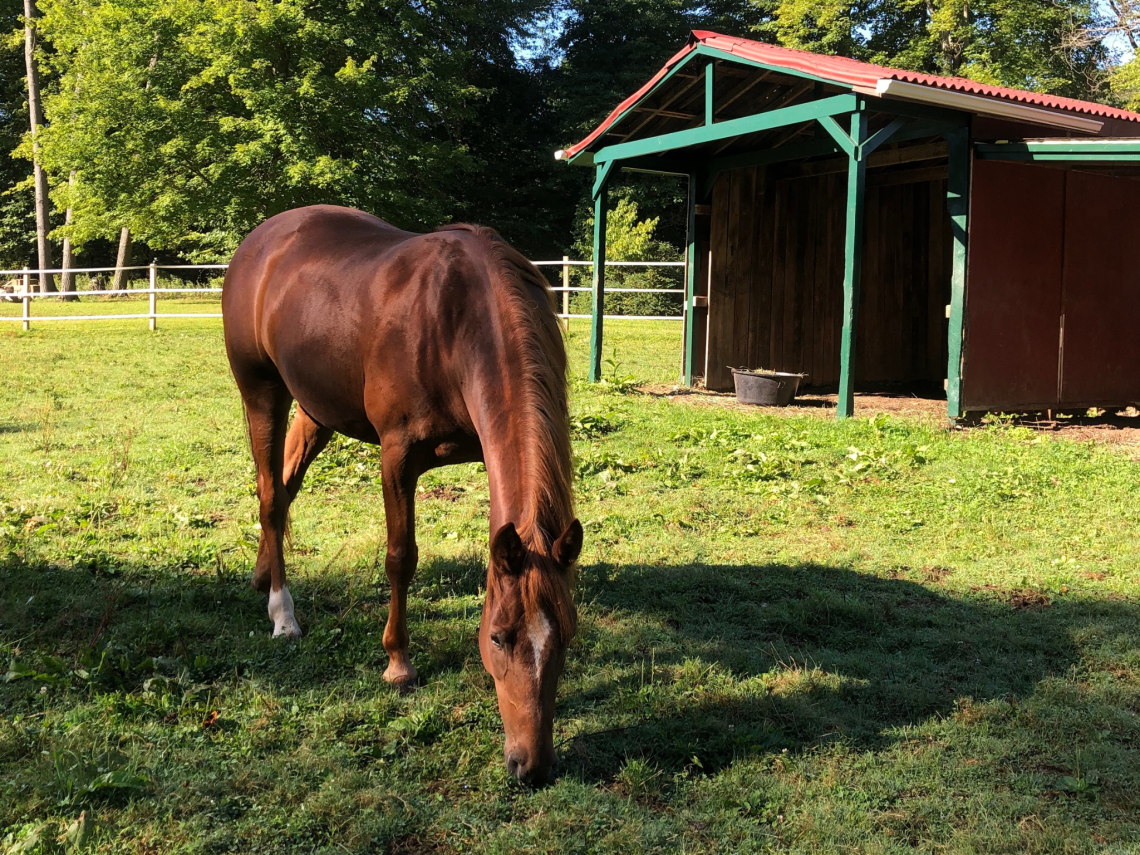I am in the process of repairing and revamping an existing horse run-in shed that was already on the property when we bought it. After seeing so many different types of run-ins for horses, I wanted to put some thought and planning into the rebuild of our shelter to try to include as many perks as I could while also avoiding plenty of hazards that I’ve experienced first-hand over the years.
So whether you are planning your own horse run-in shed from scratch or are improving an existing structure, keep these tips in mind to maximize utility and safety for your horses.
1. Face the Open End Away from Strong Winds
The direction you want to face your run-in shed for horses will depend on where you live and your climate. Take some time to get a lay of your land and determine from which direction strong winds tend to come and face the open end in the opposite direction. Also factor in sunlight, as you want your run-in to provide as much shade as possible. In my area, winds tend to come from the north/northwest, so my run-ins are situated toward the south/southeast.
2. Build High, Out of Wet Spots
It is crucial that your horse run-ins have good drainage away from the shed so that water doesn’t pool and create slick spots and mud. Not only are these safety hazards, but deep mud can also attract flies and create a whole host of other problems for your horses, like scratches and thrush.
If your run-in is in a dry enough area, you may not need any special footing – dirt floors in run-ins can work well as long as they stay dry and don’t turn into mud.
3. Avoid Deep, Narrow Shelters – Go Shallower and Wider Instead
The second run-in that was already on my property when I moved here was narrow and deep, and the lowest in the herd would sometimes become trapped in the back of the shelter by the boss mare. It’s better to go wider and shallower instead so that more horses can fit comfortably and everyone has an easy escape route – even if you just have two horses.
4. Don’t Leave a Gap between Metal Siding and Kick Boards
I strongly dislike the idea of using metal siding on run-in sheds for horses, unless you are able to install kickboards that are flush against the metal (with no gap in between). That way, if a horse kicks from the outside, their foot hopefully won’t go straight through the metal. However, this isn’t a risk that I care to take, so I prefer to use T1-11 or similar for run-ins that horses will have 360-degree access to. That’s not to say that horses still couldn’t kick through T1-11, but it’ll cause a lot less damage than metal sheeting.
5. All Hardware Should Be Hidden
This one seems like a bit of a no-brainer, but it’s worth a mention because it can also be easily overlooked. Screws, nails, bucket hooks, etc. should all be hidden or covered when not in use (in the case of bucket hooks or hay holders). If you don’t plan to keep a water bucket hung in your run-in all the time, I would caution against hanging the metal holders at all. A water trough outside the run-in offers easier access to water for all horses and eliminates the potential safety issues with an unused bucket holder.
Bottom Line
If you’re like me and are somewhat limited in designing your dream run-in because you’re working with an existing structure, don’t worry – there are still plenty of aspects you do have control over and that can greatly improve your existing run-in.
If, on the other hand, you are planning your build from scratch, it pays to take a little more time in the planning phase to make sure your run-in is situated where and how you want it to maximize shade and protection from the elements while minimizing mud and safety hazards.






